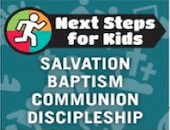The Leadership Rubik's Cube
Membership Level› Guest
Author/Source: Karl Bastian
Topic: Leadership
Whether or not you have ever mastered the Cube - this article will help you solve your Children's Ministry... and maybe the Cube too!
 The Leadership
The Leadership
Rubik's Cube
I’m sure you are familiar with the Cube which conquered America in the 80’s – The Rubik's Cube. That cube of cubes that could be turned in any direction. (If you don’t know what a Rubik's Cube is – just do a search on the internet and you will discover hundreds of pages devoted to the Cube!) The object of the puzzle is to get the six sides to all be their original color after the cube had been mixed up. Most Cube experts will agree that it only requires six moves for a Cube to be completely messed up. Re-tracing those six steps is nearly impossible. You have no choice but to go through the entire process of solving it.
While some hate the Cube, and others have mildly played around with one (hoping to accidentally solve it) I am proud to say that I have conquered the Cube. Yes, I can solve any Cube you give me, usually in less than three minutes. My best time is one minute and forty-eight seconds. Some have called me a genius for being able to solve the Cube. Perhaps. And while I hesitate to claim less, I personally feel that my conquest of the Cube is not related to any intellectual turbo boosters. To say it is genius is to diminish the accomplishment as just something that comes easy to someone who is gifted. While some may pick up and Cube and just ingeniously solve it – for me it was WORK.
I got my first Cube as a child. I was fascinated by the design. I was intrigued with the almost infinite combinations possible. I pondered what combinations were impossible. (Many are impossible, there are only 4.7 trillion possible combinations. No, I did not count them.) And like many before me, I had to destroy one, just to discover exactly what was inside. But after that mystery was solved, I was determined to solve it. Not by taking it apart and putting it back together solved. Not by moving the stickers. Not by reading a ‘hints’ book – but by studying it. One side is not to difficult to solve. But then you quickly learn that one side must be completed correctly – with the adjacent edges also matching the side they are on. Next is the second row, then a cross on the bottom, then the corners, and lastly, the bottom center pieces.
I have discovered that the process of learning to solve the Rubik's Cube is a fantastic lesson in leadership. And the good news for you, is you can learn those lessons – without having to learn the Cube. Why? Because I am going to tell you! J I still keep a Cube near me. One is on my desk at home and at work. It is a constant reminder to me of principles of leadership and life that I learned from the Cube. And I still pick it up often to make sure I can still solve it and occasionally time myself to see if I can ever break that 1:48 record.
So, how do you learn to solve the Cube? And what does that process teach you about solving other problems or puzzles in life?
Lesson #1 It will not solve itself. Many people own Rubik's Cubes (or imitations) but they are buried away somewhere. At some point in time they gave up. Or perhaps they never even really gave it a shot. They were intimidated by it – or quickly discouraged. If you allow the size of problems, or repeated failure to prevent you from succeeding – you will be locked in failure and have to live your entire life wondering if you ever really could have solved it – if you’d ever really given it your best.
Lesson #2 It will not accidentally become solved. I once thought that if I just played with it enough it would eventually return to a solved position, or close enough that I would recognize it and be able to complete it in a few more turns. This led to hours of casual twisting and turning while watching television, while reading, while eating, while others were talking, practically while sleeping – but despite all my twisting, it never solved itself. Your problems will also never solve themselves with idle attention. You need to deliberately set out to address them and systematically come to a solution.
Lesson #3 Start with what you do know. Solve one side. Then solve another. And another. I had to get a feel for the Cube solving side after side. Sure, as soon as I started on a new side, I lost the side I had already solved, but I was learning the feel of the Cube. I was learning, not short-cuts, but quicker, more efficient ways to get a piece where it needed to be. Life and ministry can be like that. At first, you can’t be on top of everything. You have to grab a task and get it together. Then devote your attention to another. Trying to keep on top of everything at once may mean that nothing is in order! You need to learn to get comfortable with things out of place. The lessons you learn will be valuable and prepare you for the greater task ahead. A genius may solve the Cube in a day – but for most of us, it takes time and diligence and patience.
Lesson #4 Next start to do what you know while preparing for more. After you can solve one side, you need to learn to solve that side with the right pieces in the right places. It is not enough for all the red squares to be up, they need to have the same color on their adjacent sides, otherwise you can not move ahead without destroying what you have already accomplished. In leadership – it is the same. As you get better at the basics, you need to begin to shift toward doing the basics while looking ahead to the future. Start to lay a foundation that can be built upon. Just doing the basics is no longer enough – it becomes time to be putting things in place for growth and development.
Lesson #5 Accept what you can not change. The center pieces on each side of a Cube do not move, you must accept them where they are. You can not change them. While you might think so at first, close examination will show that no matter how you move the Cube, their orientation to each other never changes. Also in life, there are some things you can not change. Identify what they are, accept them, even embrace them, and work around them. In fact, their consistency becomes the anchor in a world that otherwise is constantly changing.
Lesson #6 Then start to experiment while maintaining what you have already accomplished. After you have a feel for the Cube and many of the basic moves, it is time to move on to greater things. Not only is the top surface solved, but the entire top row. Now you must move down and solve the four corner pieces in the center row. How do you do this without messing up the top row? Experiment with ways that you can bring down a piece from the top row and put it back up a different way. There are several ways to do this. Then, after you discover one, you study – WHAT CHANGED in the second row and the bottom row? If you bring a piece down one way, and put it back up another, it will alter the other remaining pieces, while leaving the top still solved. This is the secret to the Cube. It is also the secret to solving problems in life and ministry. You must be willing to try new things, without permanently messing up what you have already accomplished. HOWEVER, they may need to be temporarily disrupted. You need to bring things back to order often and regularly. As you do so repeatedly, people who work with you will begin to trust you more. They will see the lessons learned, and eventually the progress you are making. But you must not go so far that you mess up what you have already solved. If you wander too far from the beginning, you will lose tract, and eventually have to start all over. This is discouraging for both you and those who work with you. Experiment – take risks – but keep close sight of what you have already accomplished.
Lesson #7 Learn to recognize patterns and principles. As you learn more and more of the sequences that will alter the remaining pieces while maintaining the integrity of the top row, you begin to prioritize the moves and determine which moves alter which sets of pieces. (corners, centers, etc.) Soon you discover what order to put the sequences in so that the Cube gets closer and closer to being solved. Also in life and ministry you need to start to recognize patterns and principles from the things you try and put changes in priority. Discover what things different decisions affect and then put your plans in priority order. You may have three great ideas of ways to solve three separate problems, but if they are not done in the right order – chaos can be the result!
Lesson #8 It is possible to solve! With patience, thought, effort, determination and careful risk taking – you can solve the Cube. And what a great feeling of satisfaction when it is done! You also can conquer whatever trial, problem, difficulty or challenge that the Lord puts before you. But you must have these same qualities plus faith in the One who put you there before the challenge in the first place.
Lesson #9 After you solve it, there is still more to learn. I did not solve the Cube and then throw it away. Now I seek to become faster – more efficient. I still try to analyze how I can save moves and be more efficient. Some patterns can be done several ways and in different directions. Instead of doing a move ten times to get the desired result, I want to know exactly which way to hold the Cube before doing the move so that I can accurately predict the result instead of waiting to see what it is and then react. You too, even when you get there – when you are "on top of it" and have a smoothly running ministry or program, you need to continually be working to make it better, faster, more efficient. There is always room for improvement.
Lesson #10 There are unlimited challenges out there. My love for the Cube has lead to a hobby of collecting puzzles. Whether it is Rubik's Mini-Cube, Rubik’s Revenge, Rubik’s Linking Rings, or other puzzles – I have almost one hundred different physical puzzles made of iron, plastic, wood, glass, string, and even foam! There is always more that you could be doing for the Lord! But don’t worry about those future challenges yet – start with the one you already have. Perhaps you will go dust off that Rubik’s Cube, but more importantly, perhaps you will determine NOT to give up on the challenges God has given you, and you will determine to work at them until you too discover the deep joy and satisfaction of accomplishing a great task!
Written by Karl D. Bastian











